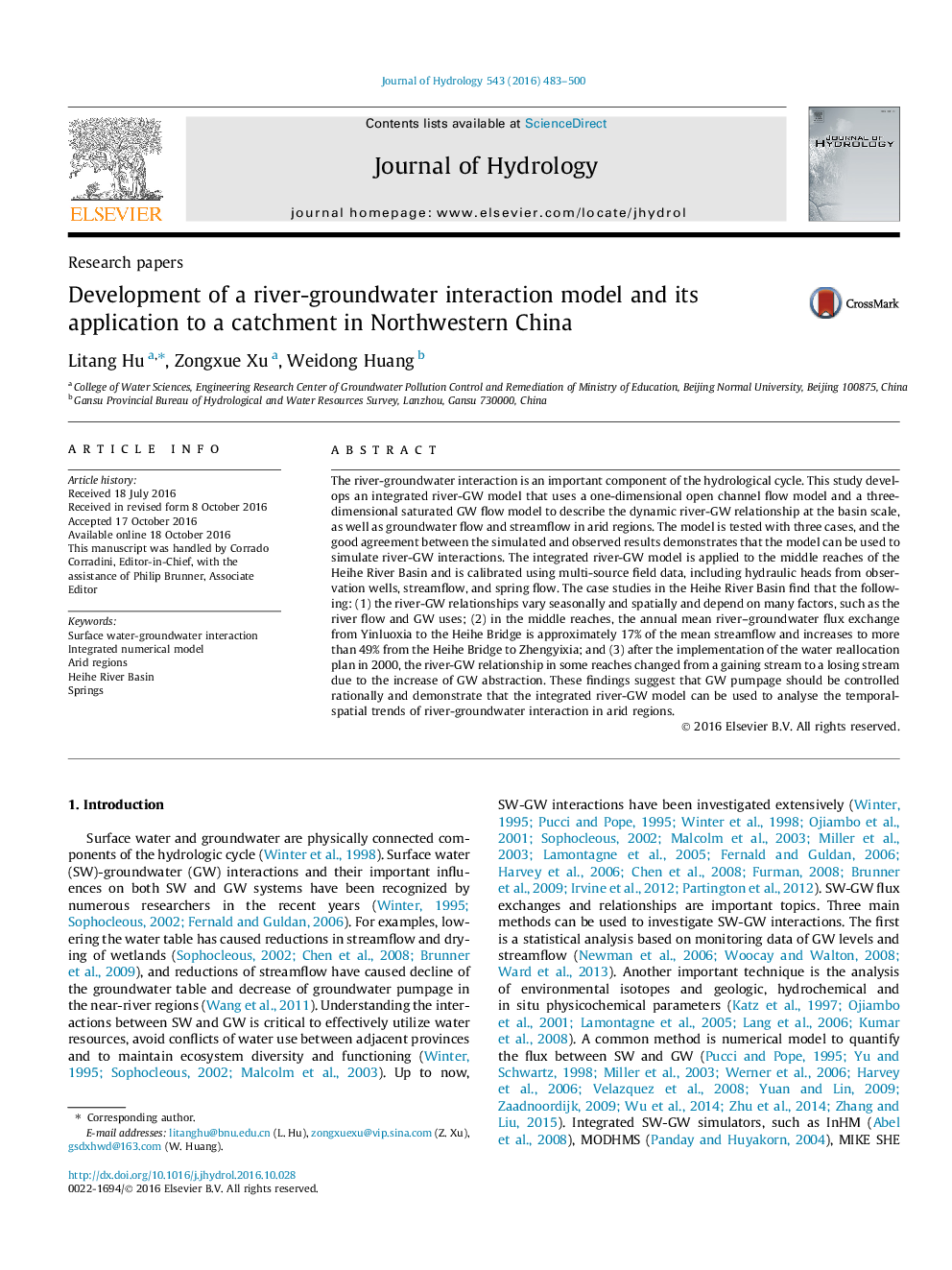| Article ID | Journal | Published Year | Pages | File Type |
|---|---|---|---|---|
| 5771447 | Journal of Hydrology | 2016 | 18 Pages |
â¢Spatial-temporal river-groundwater interaction in a river basin is demonstrated.â¢A coupled river-groundwater flow model is developed and tested.â¢The coupled model is calibrated and validated using multi-source field data.
The river-groundwater interaction is an important component of the hydrological cycle. This study develops an integrated river-GW model that uses a one-dimensional open channel flow model and a three-dimensional saturated GW flow model to describe the dynamic river-GW relationship at the basin scale, as well as groundwater flow and streamflow in arid regions. The model is tested with three cases, and the good agreement between the simulated and observed results demonstrates that the model can be used to simulate river-GW interactions. The integrated river-GW model is applied to the middle reaches of the Heihe River Basin and is calibrated using multi-source field data, including hydraulic heads from observation wells, streamflow, and spring flow. The case studies in the Heihe River Basin find that the following: (1) the river-GW relationships vary seasonally and spatially and depend on many factors, such as the river flow and GW uses; (2) in the middle reaches, the annual mean river-groundwater flux exchange from Yinluoxia to the Heihe Bridge is approximately 17% of the mean streamflow and increases to more than 49% from the Heihe Bridge to Zhengyixia; and (3) after the implementation of the water reallocation plan in 2000, the river-GW relationship in some reaches changed from a gaining stream to a losing stream due to the increase of GW abstraction. These findings suggest that GW pumpage should be controlled rationally and demonstrate that the integrated river-GW model can be used to analyse the temporal-spatial trends of river-groundwater interaction in arid regions.
